DOCIN
DocIn revolutionized healthcare in third-world countries by saving hours daily, reducing prescription errors, and enhancing appointment efficiency.
Tasks
Research / UX UI Design / Branding / Prototyping / Usability Testing

Project Overview
Description

Patient Scheduler App is system to make small doctor’s life easy where these doctors can easily manage their patient’s schedule. This App can be used by Doctors, Therapists, Dietitians, etc.
The biggest advantage is doctors can save each patient’s prescriptions and medical reports along with the profile information.
This app is made only for doctors and not for patients access. Planed and designed with only most important and minimum features and this makes it easy to use.
My Goal

Save Time
Saving time from managing patients and their appointments.
Organize
Organize patients prescription history and their reports.
Easy Appointment
Try to make an easy way to creating appointment of patients.
Minimal Design
Minimal and easy design with features only for doctors.
Problem Statement & Solution
Problem Statement

- Difficult to manage patients’ queues in clinics.
- Doctors can’t remember patients’ prescription or medical test history.
- Patients often forget to bring old prescriptions.
- Doctor gives appointments verbally, and they forget appointment times later.
- Sometimes doctors give appointments to patients for the day they will be out of the clinic.
- Doctors do manual rescheduling of missed appointments; the new time may clash with another patient’s appointment that the doctor didn’t remember
Possible Solution

A digital solution for doctors on which doctors or their assistants can create appointments, record each patient’s prescription and medical report history. Doctors can mark their absence so that appointments can be placed accordingly, and rescheduling can be done without clashing with upcoming appointments.
Discover Phase
Qualitative Research

- Tell me about you and your profession
- What is your daily routine?
- How do you manage all your patients daily?
- Do you make any notes about patients?
- What about recording the patient’s history?
- Which information do you expect from the patients before starting the appointment?
- What will you do if patients miss their appointment?

This screenshot is from a google meet interview I conducted with neuroscientist.
Key insights derived from the interviews

- They may have 10-20 patients per day to manage.
- Mostly manage their appointments manually and remember the appointments.
- Mostly doctors make some notes to remember special case patients’ medical history on the prescriptions.
- Almost every doctor expects a similar kind of information from patients to start the appointment.
- Generally, doctors do nothing if patients miss their appointments. But they want to remind them or reschedule appointments.
Quantitative Research



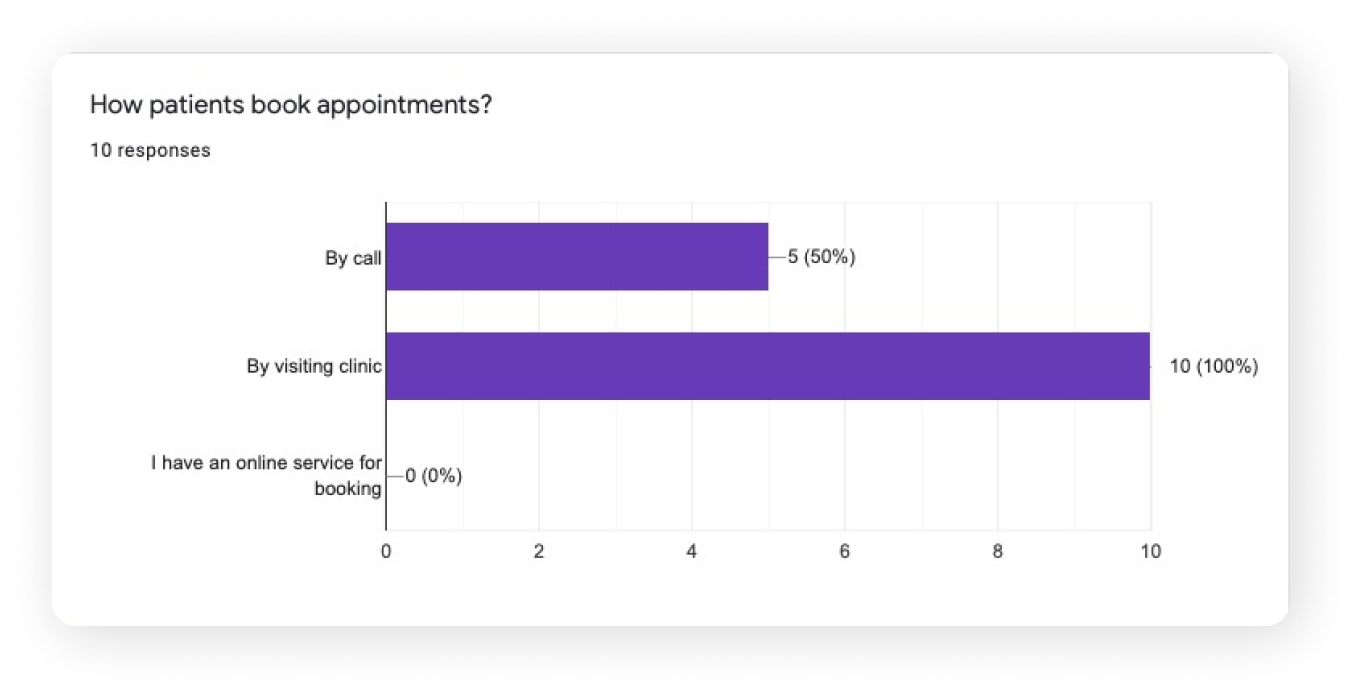
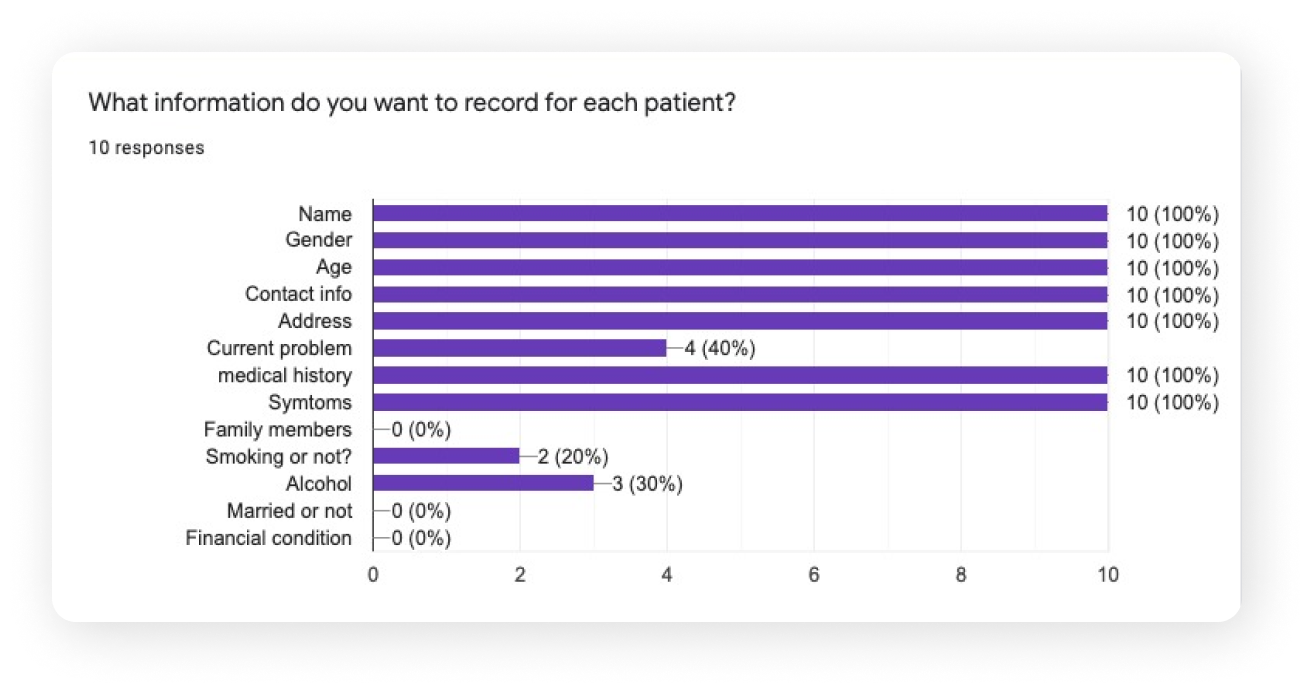
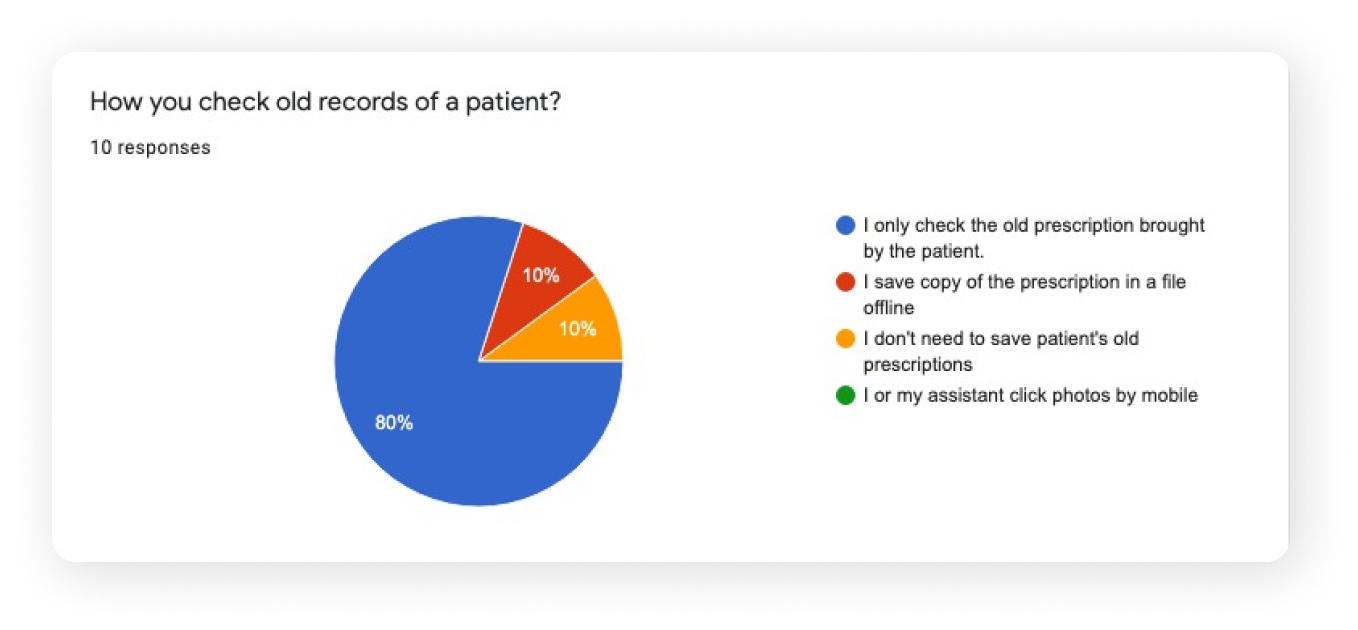
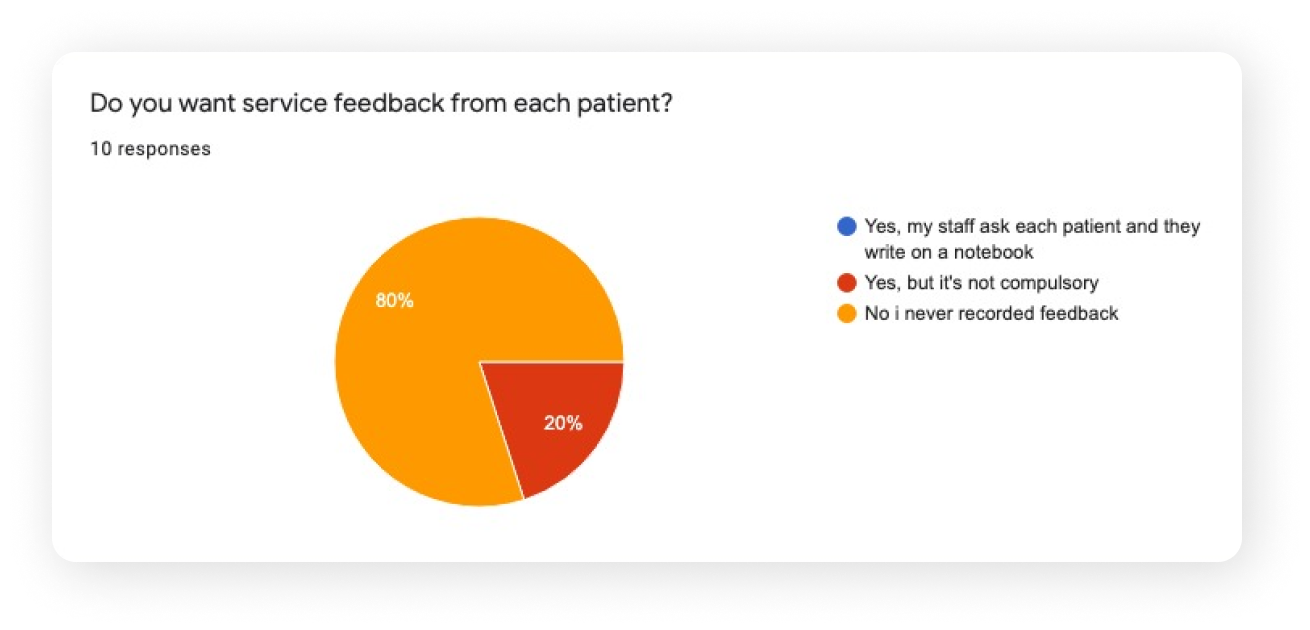

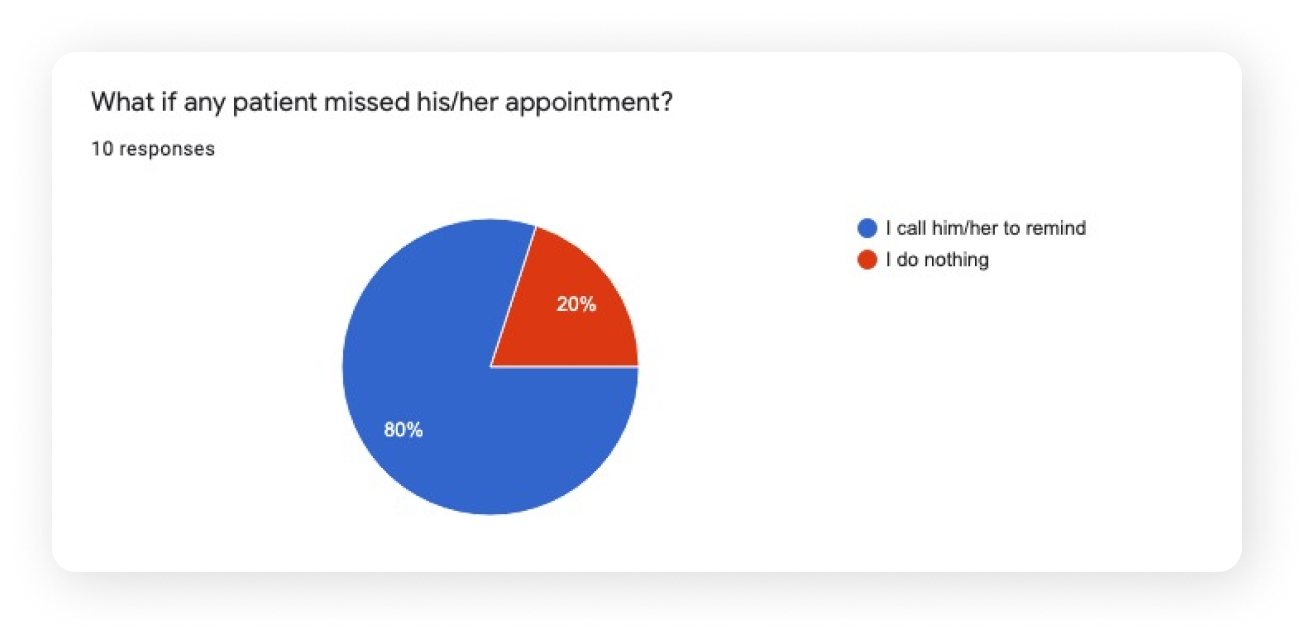
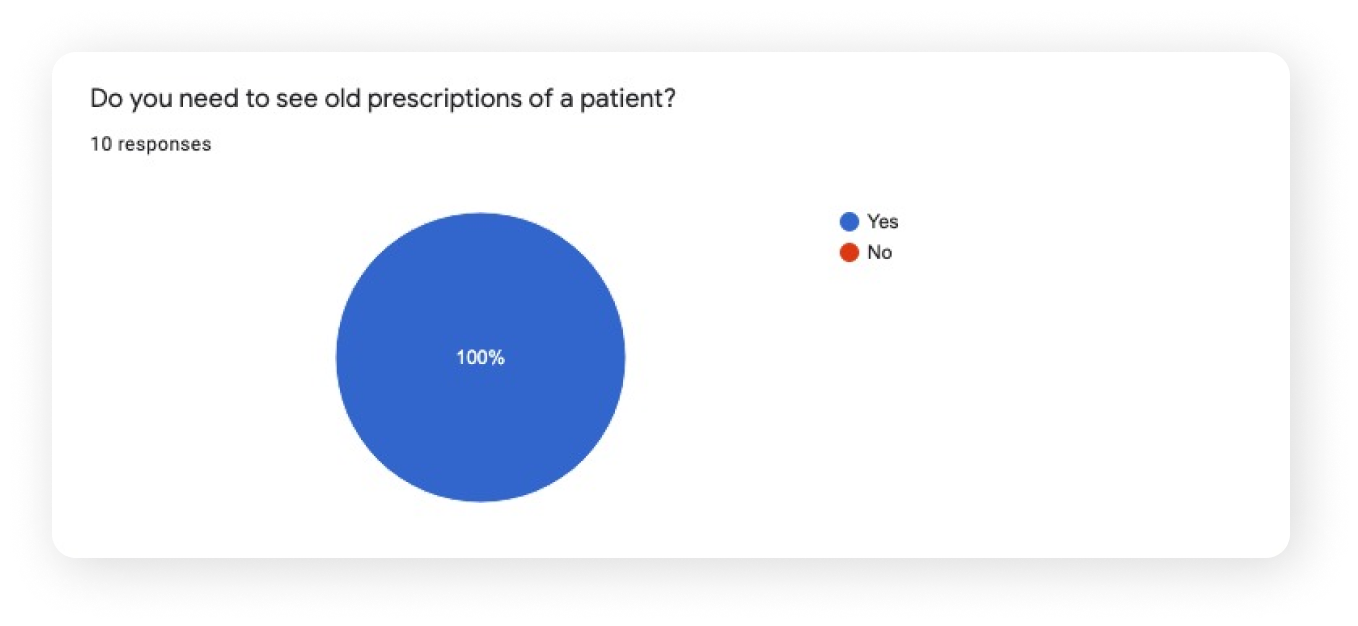
Key insights derived from the interviews

These questions were creates smartly to get quantitative insights for product. Some of key insights are:
- More than 60% doctors admits that managing patient records is a pain.
- 100% doctors agree that they are facing problems in managing appointments.
- Every doctor has an assistant and 70% doctors use noteboo®to note things.
- Mostly patients are booking appointments through call or visiting the clinic, and not even a single doctor is using any online service.
- Every doctor needs Name, gender, age, contact info, address, medical history, and symptoms information from each patient.
- 80% doctors don’t record feedback from patients, so we may ignore this featured for now.
- Every doctor want to see previous prescription of the patient. We should have featured to save all the prescriptions.
- 80% of the doctors remind the patients about the appointments.
- 80% doctors check old prescriptions brought by the patients in appointment.
Define Phase
Empathy Map

This process was done to define the target audience with more clarity, as well as illustrate their needs and actions. Empathy map help me gain perspective on their thoughts and feelings. The data in empathy map is based on insights from user interviews.

Pain
- I have so many patients. I can’t remember everyone history and records.
- It’s hard to search old records
- Sometime when I am not in my clinic I have to inform every patient manually.
Gain
- Wants all records needs to be more organized
- Easy to search old records and history
User Persona


User Persona
- 47 Years old
- Married
- Lahore
- MBBS
- 2 children
Bio

Key Characteristics

- Manages Personal and Professional life.
- Daily, she goes to the Clinic.
- Check daily 20-30 Patients.
- Ask Patients about their health.
- Sometimes Goes on Holidays.
- Hires an assistant.
Keeps Record of patients. - Meets with friends on sunday.
Frustrations & Pain points

- I have so many patients. Then I can’t Remember every patient’s records and history.
- It’s Very hard to Search any old Record.
- Sometimes I’m not in my clinic then I have to inform every patient manually.
- Tired from making an appointment list every day.
- Irritating when find a specific Record.
Goals

- Want all Appointments Well organized.
- Easy to search old records.
- Easy way to schedule new appointments
- The patients records are well organized
- Can quickly reschedule or cancel an appointment
- Automatically send SMS to the patient for appointment details.
- Patient get SMS when I’m not in clinic
Other applications

- Excel
- Power Point
- Keep Notes
- Chrome
Card Sorting

Unsorted Cards

Sorted Cards
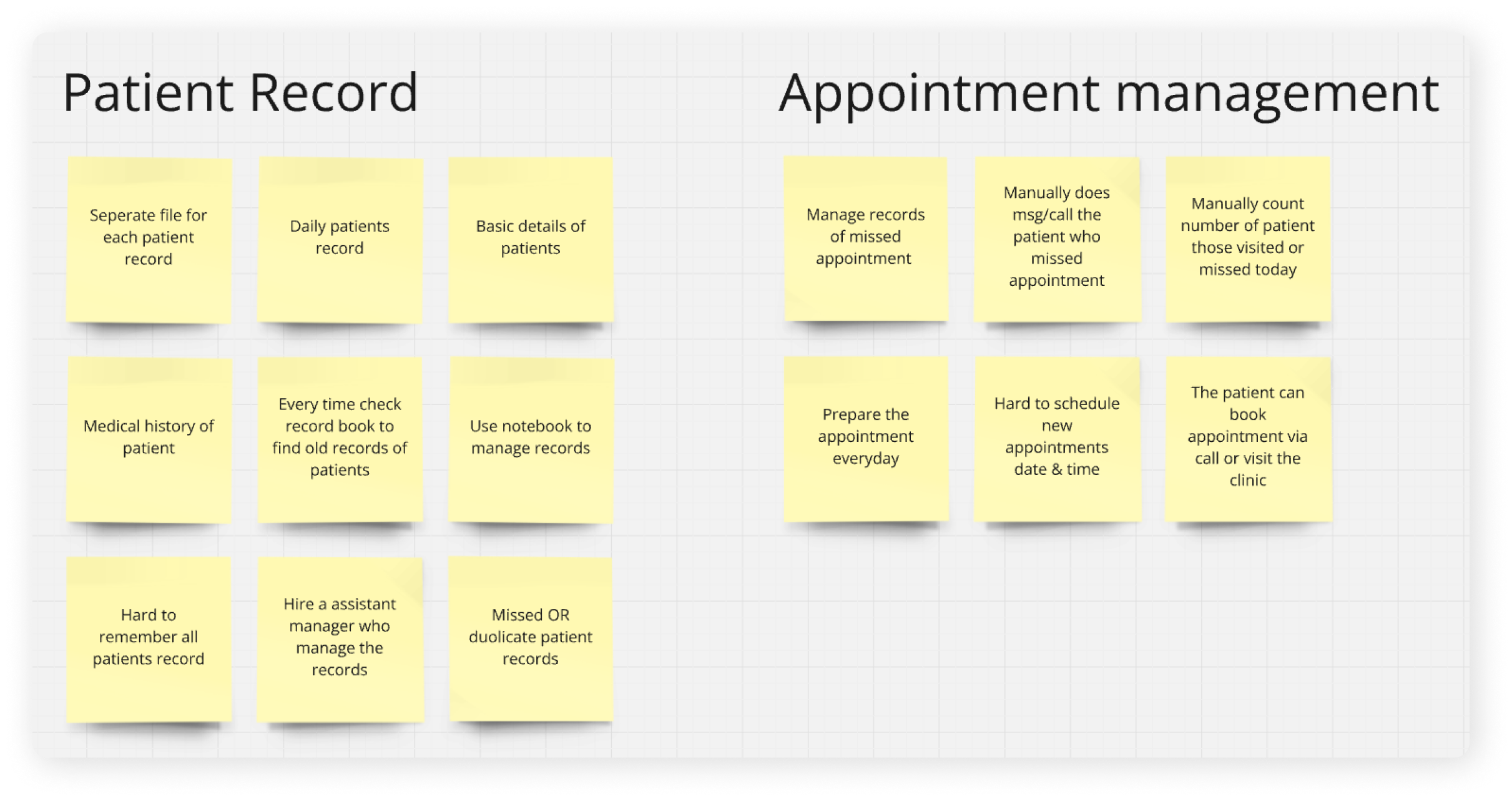
Feature prioritization matrix


Information architecture

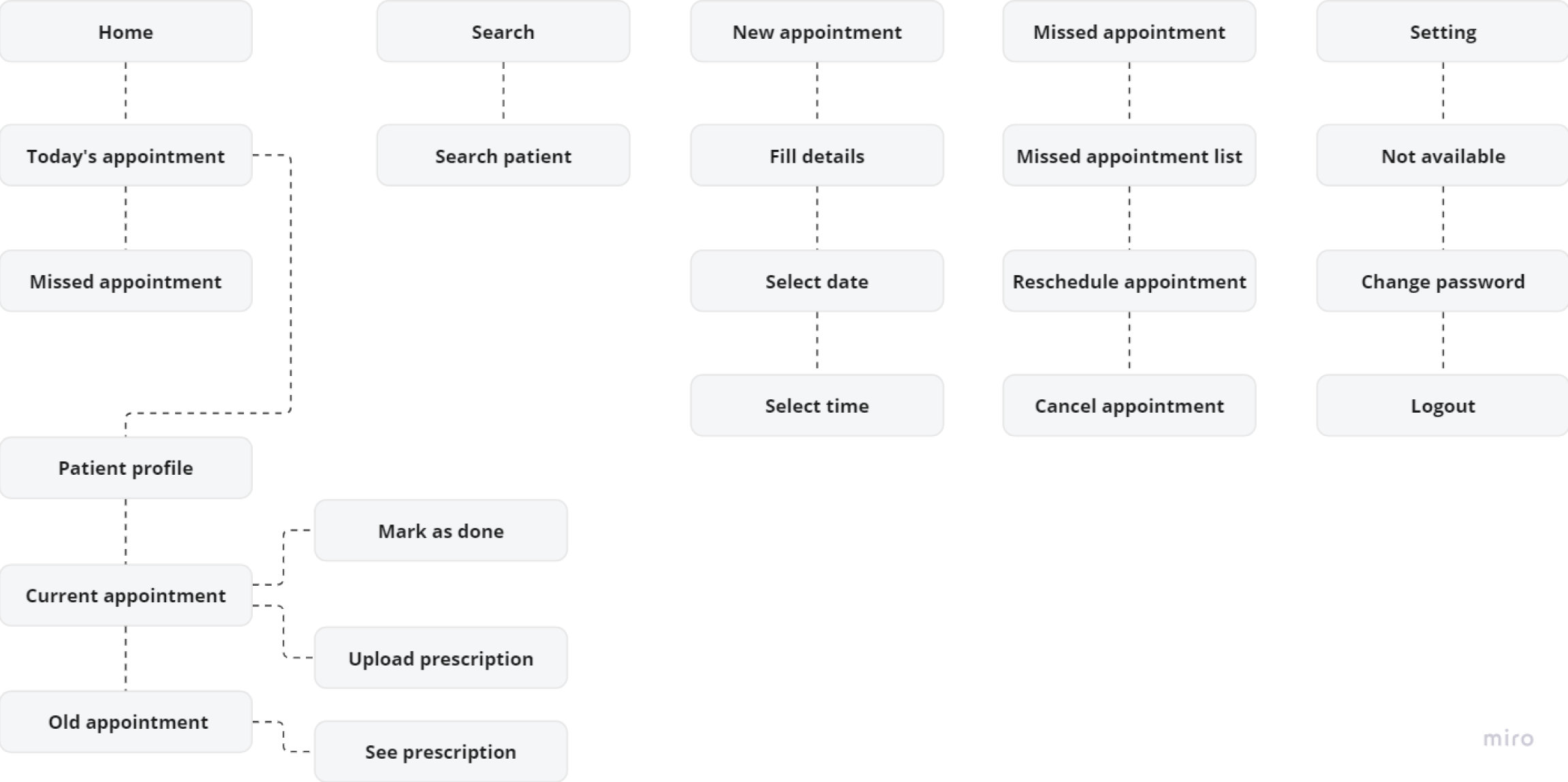
User Flow


Design Phase
Wireframes

Paper sketches
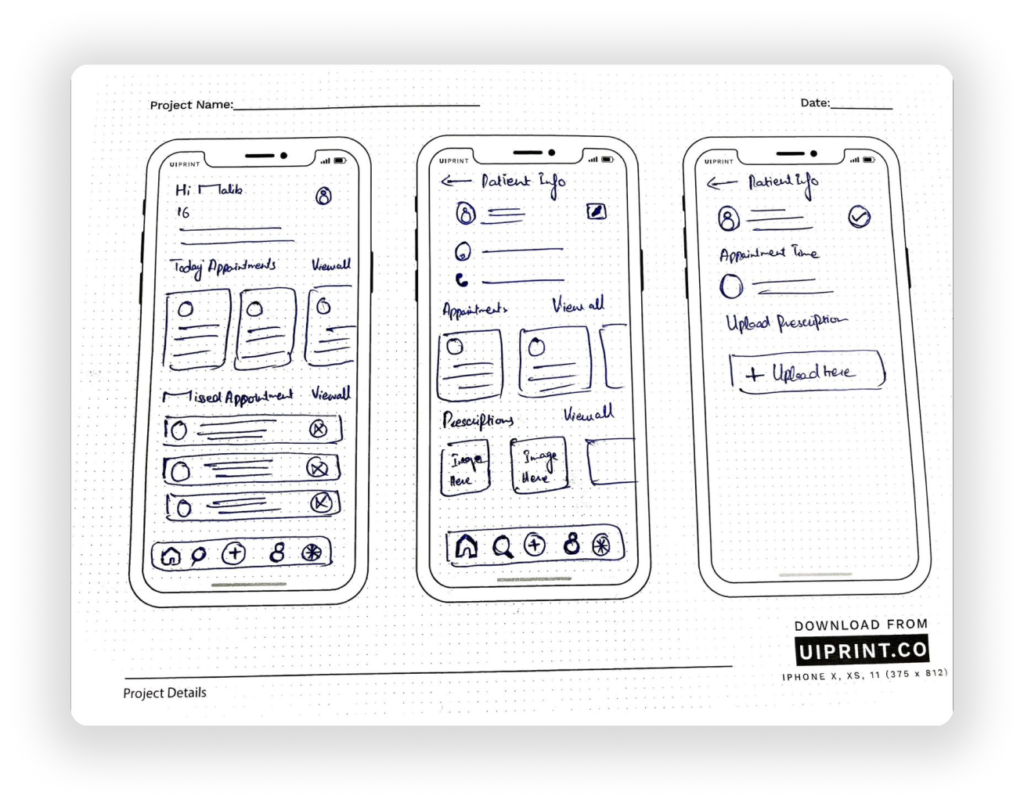


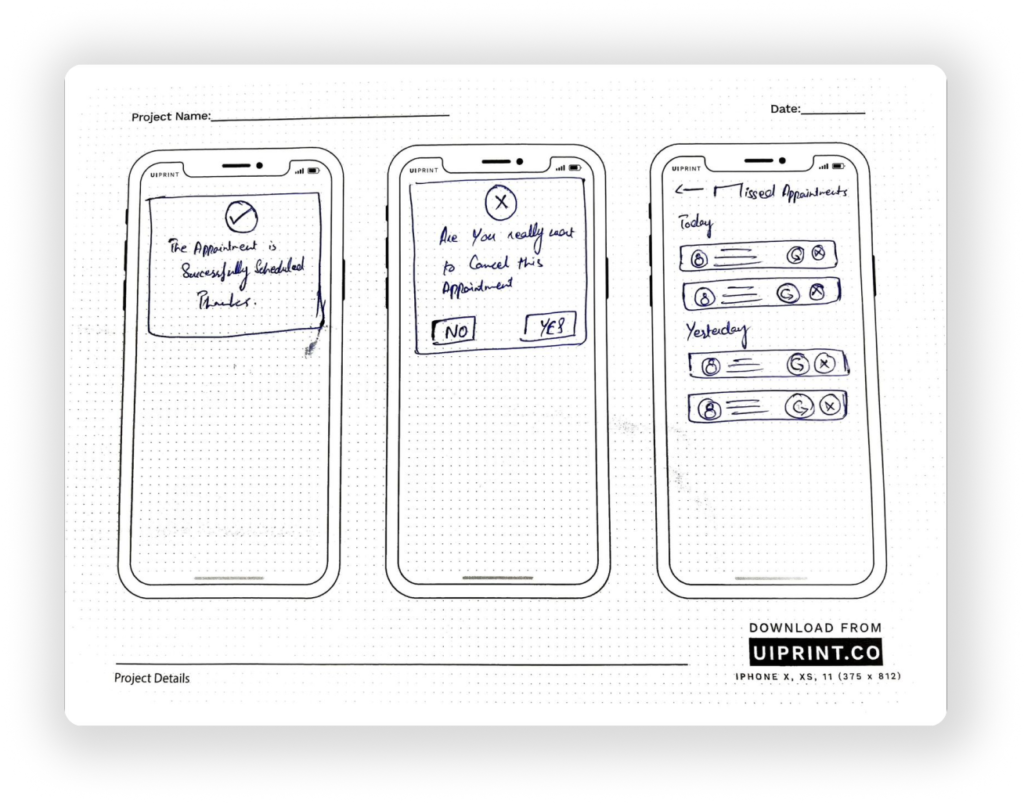


Design System
Colors




Typography
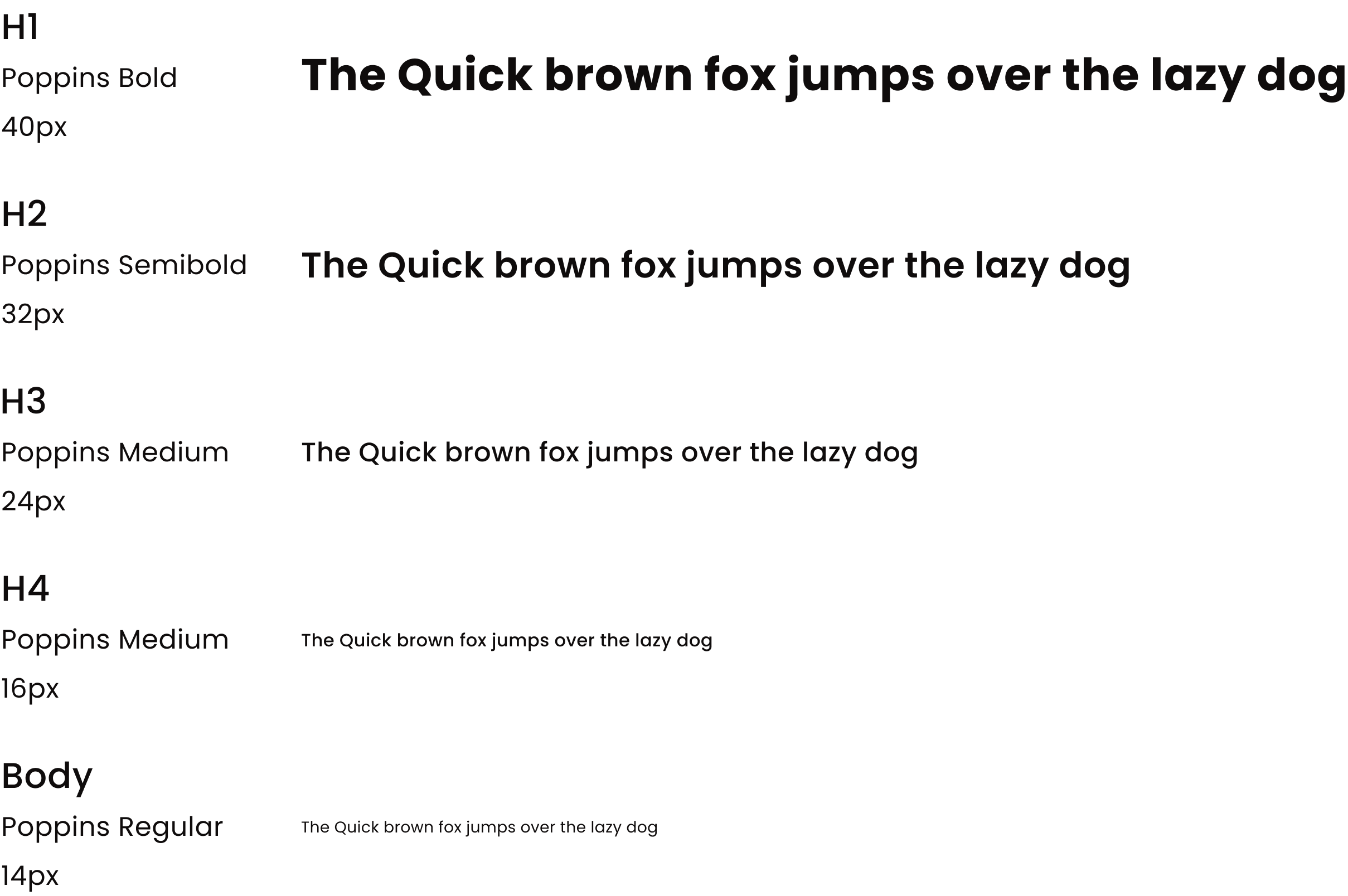
Typography
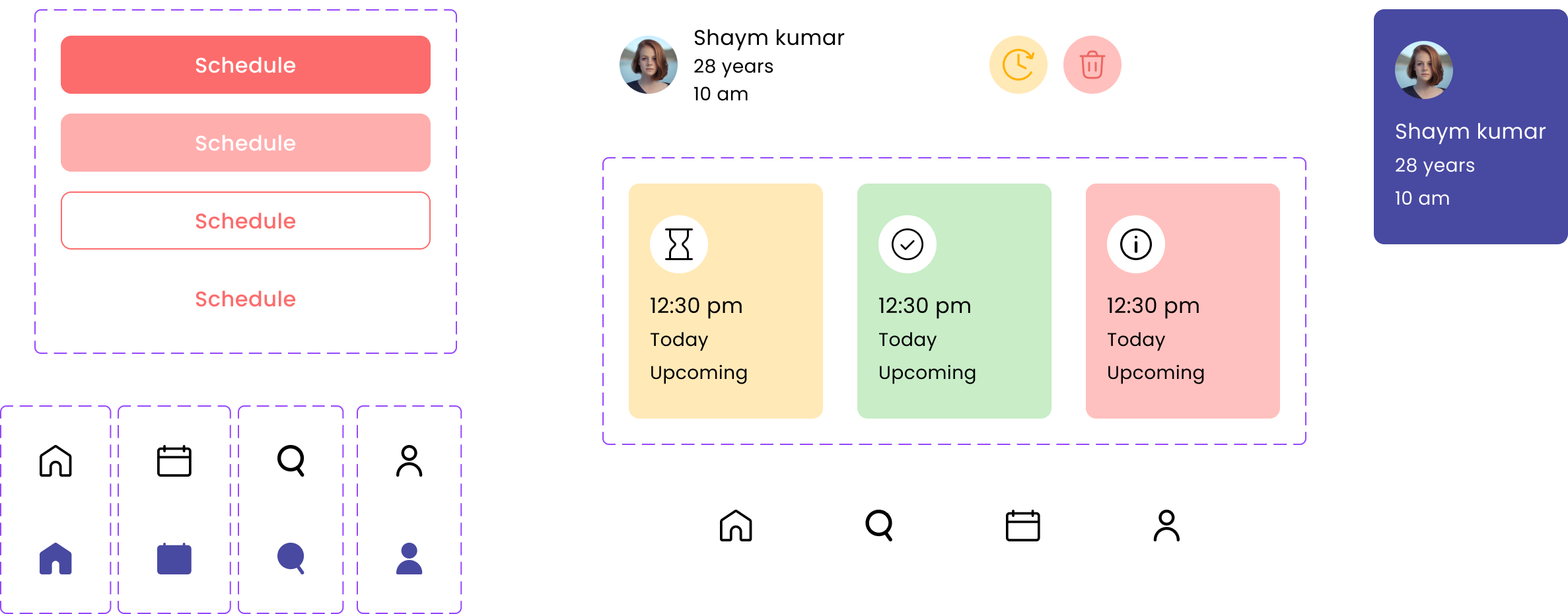
Final UI Design

Test Phase
Usability testing

After the visual design was complete I tested the prototype with (2 doctors) I wanted to see how user-friendly the application is. The test was conducted over google meet video calls where the participants were given the following tasks while I observed how they navigated through the application
Searching a patient and checking his/her all the pending, completed or missed appointments.
The participants were able to navigate through the app fairly easily. They appreciated the interface and gave the following inputs.
Suggestion to make the experience better

- Appointment statuses are not easy to understand, they should be easily recognized.
- Whole page looks like mixed content, can’t recognize things visually well.
- Checking prescription option was revealed after a long scroll to end. Prescription section must be available above.
Implementing feedback

Based upon the testing and the feedback, I planned something new for this screen.
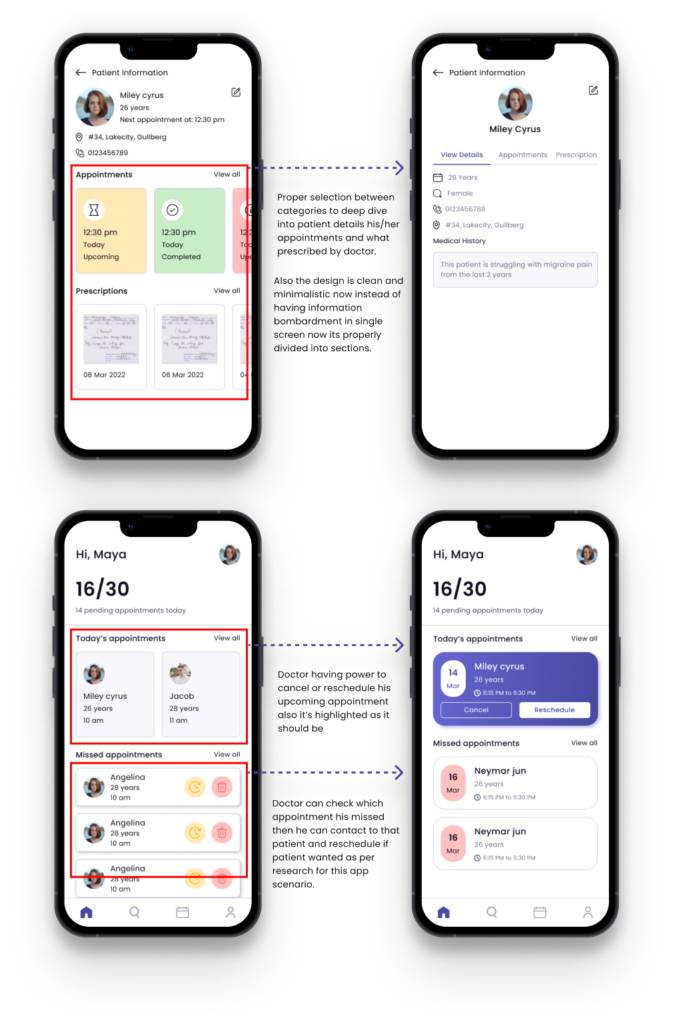
My learning

- It was fun and challenging working on this project. I learned the importance of the user research for a successful product.
- I already used many of the processes earlier on other projects but i added some new processes like card sorting, information architecture, etc and definitely these added a lot of value to this project.
- I have done interviews with doctors that provided me with real time data from doctors.
